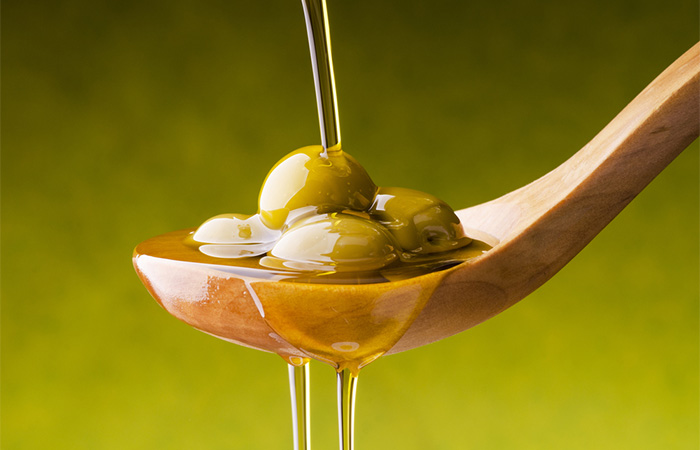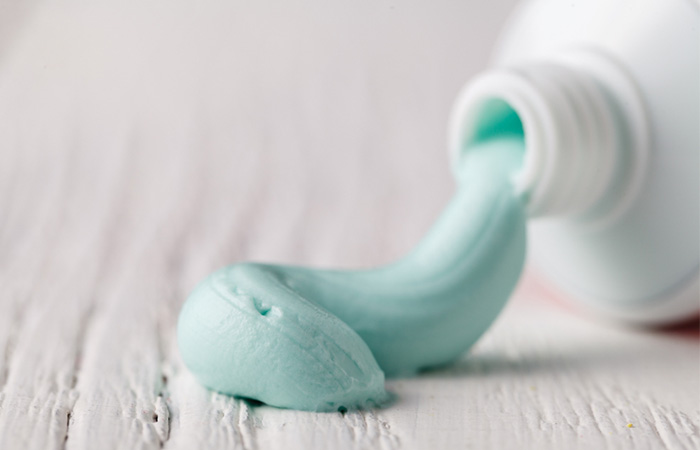You are excited to try on your brand-new set of footwear for the very first time for a fantastic night out on the community. After a number of hours, you feel the acquainted experience of discomfort in your feet, and you know you have got yourself an irritating shoe bite. The bright side is that there are a couple of easy means to treat footwear bites without throwing away your new footwear! In this write-up, we check out the different reasons and a couple of basic tips to stay clear of footwear bites from creating once more!
In This Article
What Is A Shoe Bite?
A footwear bite is the deterioration of skin as a shoe massages against your feet. This rubbing results in blisters and swelling in your feet. It is much more usual with shoes that are tight or uncomfortable.
Footwear attacks can be extremely uneasy and likewise trigger discomfort. They frequently harm a lot more when you stand or walk.
These usually occur behind your ankles or near your toes. They look like rashes or calluses i X Thickened and solidified soft cells that forms on parts of the skin revealed to prolonged rubbing or rubbing. Occasionally, these calluses may even be filled with pus.
What Causes Shoe Bites?
Ill-fitting shoes are the primary reason for footwear bites. Normally, individuals often tend to purchase footwear without effectively thinking about the measurements of their feet. This can cause your feet to massage versus the shoes. This, consequently, brings about swelling, sores, and marks on your feet.
Sometimes, the sweat from your feet can also cause the shoes to rub against the skin, causing shoe bites.
Females are a lot more vulnerable to footwear bites than males as they tend to put on tight and narrow shoes that can leave sores and scars on their feet.
Quick TipStick bandaids to the locations vulnerable to footwear bites, like the toes and at the rear of your feet. This provides padding to safeguard your skin from friction and scuffing.
The initial measure you can take towards recovery a shoe bite is to stay clear of wearing the footwear creating it. You can additionally make use of particular home remedies to alleviate the pain.
Natural Ways To Treat Shoe Bites At Home
1. Aloe Vera

Several studies have shown that aloe vera possesses anti-inflammatory and healing properties ( 1 ). This can help reduce the blisters on your feet. Aloe vera contains glucomannan i X A water-soluble polysaccharide (constructed from multiple simple sugars) present in the cell wall surfaces of a number of plant species., which can help advertise faster recovery.
You Will Need
½ teaspoon of aloe vera gel
What You Have To Do
- Apply aloe vera gel generously to the affected area.
- Leave it on for a while before you rinse it off with plain water.
How Often Should You Do This
You can repeat this remedy two times a day.
Related: Aloe Vera For Acne: 9 Ways To Use Aloe Vera For Pimples
2. Olive Oil

The bioactive compounds in olive oil exhibit anti-inflammatory properties ( 2 ). These properties can help reduce the inflammation around the shoe bite.
You Will Need
- 2-3 drops of olive oil
- 1-2 drops of almond oil (as a carrier oil)
What You Have To Do
- Mix two to three drops of olive oil with one to two drops of almond oil .
- Apply it generously to the affected area.
How Often Should You Do This
Repeat this remedy two times a day until the inflammation reduces.
Related: How To Use Olive Oil To Get Glowing Skin?
3. Toothpaste

Toothpaste contains menthol, an important component that acts as an analgesic i X The home of a drug used in surgical procedures that reduces the discomfort assumption without making the individual subconscious. and minimizes the discomfort triggered by shoe bite ( 3 ).
You Will Need
What You Have To Do
- Take half a teaspoon of toothpaste on a clean cotton pad.
- Apply this onto the shoe bite and leave it on until it dries.
- Rinse thoroughly with water.
How Often Should You Do This
You can use this remedy one to two times daily.
4. Honey

Honey exhibits anti-inflammatory and antibacterial properties that help reduce the inflammation around the shoe bite. These properties also prevent further infection ( 4 ).
You Will Need
- A sterile cotton ball or gauze
- 1 tablespoon of honey
What You Have To Do
- Take a sterile cotton ball and dab it in a tablespoon of honey.
- Place this on the affected site.
How Often Should You Do This
Repeat 3-4 times daily.
Related: Is Honey Good For The Face And Skin? How To Use It?
5. Coconut Oil And Camphor
Coconut oil exhibits anti-inflammatory and analgesic properties ( 5 ). The lauric acid in coconut oil possesses antimicrobial properties ( 6 ). Camphor has been used in traditional medicine for its anti-inflammatory properties ( 7 ). Together, they can help in alleviating swelling in the affected foot and prevent further infection.
You Will Need
- 1 tablespoon of virgin coconut oil
- 1 teaspoon of camphor
What You Have To Do
- Mix a tablespoon of coconut oil and a teaspoon of camphor.
- Dab a cotton ball with this mixture and apply to the affected area.
How Often Should You Do This
You can do this two times daily.
6. Neem And Turmeric
The energetic substances in neem leaves and turmeric (curcumin) can help reduce swelling and infection. This is because of their anti-inflammatory and antimicrobial residential or commercial properties ( 8 ), ( 9 ).
You Will Need
What You Have To Do
- Blend all the ingredients to form a thick paste.
- Apply this paste to the shoe bite.
- Leave it on until it dries and rinse off with water.
How Often Should You Do This
Do this two times daily.
7. Petroleum Jelly

Petroleum jelly is moisturizing. It is also known as petrolatum i X A mix of mineral oils and waxes that is typically referred to as vaseline or oil jelly, a prominent cosmetic., and it shows antimicrobial homes that promote recovery ( 10 ).
You Will Need
A tablespoon of petroleum jelly
What You Have To Do
- Apply petroleum jelly to the shoe bite.
- You can cover the area with socks and leave it on overnight.
- You can additionally use some jelly onto the sides of your shoes for a few days back to back to soften the sides.
How Often Should You Do This
You can repeat this until your shoe bite is healed.
8. Tea Bag
Using black tea remove on the damaged skin of research laboratory rats was discovered to quicken the recovery process, leading to reduced swelling and raised collagen production ( 11 ). Nevertheless, there is no study confirming black tea’s safety or efficacy for this purpose.
You Will Need
- 1 black tea bag
- 1 cup of hot water
- A clean cloth or paper towel
What You Have To Do
- Steep a black tea bag in hot water for a few minutes.
- Allow the tea bag to cool until it is comfortably warm but not scalding.
- Gently press the tea bag against the affected area for a few minutes.
- Get rid of the tea bag and allow the location air-dry or rub it completely dry with a clean towel or paper towel.
How Often Should You Do This
Use this remedy one to two times daily.
Quick TipAlternatively, you might apply cucumber paste on the footwear bite to calm the sore and pain. A mix of coconut oil and turmeric powder can recover footwear bites rapidly.
Dealing with shoe bites is that straightforward, and these remedies can offer you the much-needed alleviation. But stopping shoe attacks is always much better, right?
How Can I Prevent Shoe Bites?
As we have actually already reviewed, uncomfortable footwear are the key source of footwear attacks. Right here are a few ways you can prevent a footwear bite:
- Constantly try the footwear on before purchasing them. This will certainly provide you a better idea of how well they fit.
- Rub some oil along the sides of the shoes. Do this for a couple of days before you can wear them. This will certainly help soften the sides and protect against footwear bites.
Venessa, a vlogger whose web content rotates concerning all points footwear, shares several brilliant hacks to stay clear of shoe attacks when wearing heels. One of the initial tips she shares is, "... when you purchase the next pair of heels, you want to make certain the area [rear of the footwear] is soft and really feels comfortable on your feet, to ensure that's a way to prevent friction. Start off with acquiring heels that are softer ... Attempt to purchase natural leather heels ( i ).”
- You can use specially designed shoe bite protectors with adhesive i X A glue-like material generally utilized to affix 2 or even more things with each other that can work on different types of surfaces. pads. These pads go inside your shoe and stick where the rear of your ankle joint would certainly be.
- You could also use toe protectors. These are similar to the adhesive shoe protectors but are applied on the front end of your shoes. These can prevent blisters on your toes.
- Wear socks or pads with your shoes to prevent excessive skin abrasion.
Say goodbye to all the worries that tag along when you are out shopping for the perfect shoe!
How do you manage footwear bites? Any ideas you would like to share? Message your concepts in the remarks box below.
Infographic: 5 Natural Ways To Treat Shoe Bites At Home
The happiness of trying a new pair of shoes is usually overshadowed by the acquainted sensation of pain caused by an irritating shoe bite! Don't fret. To guarantee you enjoy your brand-new kicks to the fullest, we put together a checklist of the 5 finest methods to eliminate footwear bites quicker in the house. Have a look at the infographic listed below to know much more.
Illustration:
Get the high-quality PDF version of this infographic.
Tight or ill-fitting footwear can trigger rubbing, and the resultant damage can lead to footwear bites, which are basically sores that form on the toes or ankles. Shoe attacks are painful and uncomfortable and can worsen unless dealt with rapidly. The primary step is to prevent wearing the shoes that caused them and after that apply the various means to eliminate footwear attacks. While you can always apply an antibacterial lotion or lotion and a plaster over the footwear bite, straightforward natural home remedy can also work wonders. Aloe vera gel, neem, turmeric, camphor, honey, oil jelly, and castor oil are some of the typically readily available components that you can relate to treat shoe bites. A few others consist of apple cider vinegar, Epsom salt soak, cooking soda, cornstarch, aspirin paste or just a moisturizing lotion. You can likewise ice the area and after that use tea tree oil, lavender oil or a chamomile tea compress for quick recovery. To avoid shoe bites in the future, you may make use of oil on the sides of new footwear and put on socks, protectors, or adhesive cushioning.
Frequently Asked Questions
Why do new shoes hurt?
New footwear can hurt if they do not fit you well. Likewise, the material of new shoes is instead rigid up until the footwear are used well. So, to soften the sides, you can use some oil for a number of days prior to wearing them.
Can a particular type of footwear give me shoe bites?
Closed shoes like sneakers, bellies, pumps, or oxfords could cause shoe bites as they could rub against your skin.
Does Vaseline stop shoes from rubbing?
Yes, Vaseline can be a wonderful remedy to avoid rubbing in brand-new footwear. When barging in new footwear, using Vaseline alike massaging areas like the rear of the heels or side toes may protect against sores.
How do you break into new shoes fast?
A few simple hacks to break in new shoes to keep in mind are –
• Wear the shoes often to stretch the material of the footwear.
• Put the shoes out in the sun or use a dryer to stretch the shoe fabric.
• Place frozen bags inside the shoes to reduce stiffness.
Which socks prevent blisters?
Because moisture plays an essential duty in causing sores, opt for socks made from products like Merino wool or fabrics like polyester to stop sores.
How long does it take to break into new shoes?
The duration differs from shoes to footwear and relies on variables like shoe material, how frequently the footwear are worn, etc. It may take an approximate burglary period of 3-4 weeks.
Why do my shoes give me blisters on my heels?
Blisters are created because of friction between the skin and footwear surface area. The most common locations that come under this group are heels, soles, and toes of the feet.
Key Takeaways
- Shoe bites are caused due to Ill-fitting shoes and friction due to sweat on the feet.
- All-natural components like aloe vera, coconut oil, and honey boosts quicker healing of feet blisters due to their antimicrobial nature.
- Apply a paste of anti-inflammatory ingredients like neem and turmeric on shoe bites to reduce swelling and infection.
- Avoid footwear attacks by using toe protectors or using a layer of oil jelly on the sides of your footwear to soften their sides.
Discover how to stop and deal with foot sores with simple suggestions and tricks. Take a look at this video on foot care and maintain your feet healthy and balanced and pleased!


